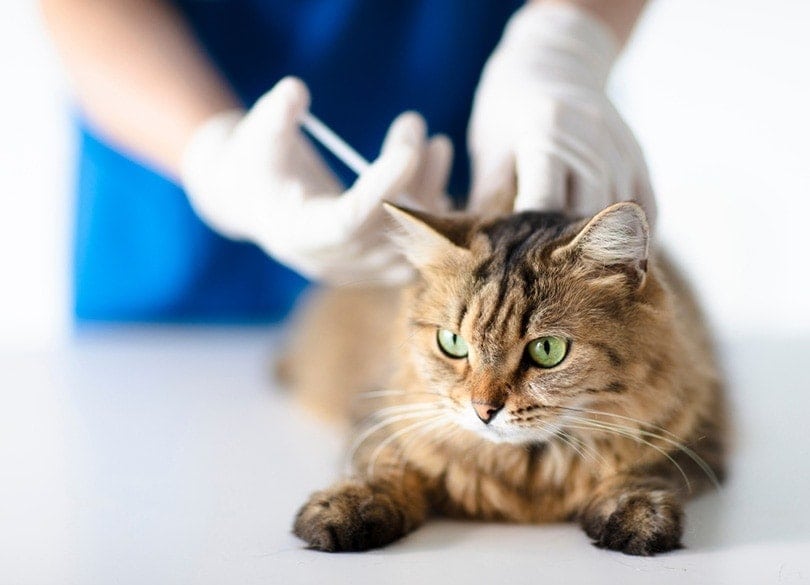VET APPROVED

The information is current and up-to-date in accordance with the latest veterinarian research.
Learn more »Click to Skip Ahead
Rabies is a serious viral disease that is generally found in wildlife but can easily be transmitted to any mammal, including house pets and even humans. The rabies vaccine is considered a core vaccination in the United States and key to the prevention of this terrible disease.
Depending on state regulations, the risk of rabies in an area, and which type of rabies vaccine has been administered, the booster shot will either be required annually or once every 3 years. This is something your veterinarian will go over when they vaccinate your cat.

Rabies Vaccine
The rabies vaccine is one of the four vaccines considered core on the schedule for cats and kittens. A core vaccine is defined by the WSAVA (World Small Animal Veterinary Association) as a vaccination which protects animals from severe, life-threatening diseases that have global distribution and which all dogs and cats, regardless of circumstances or geographical location, should receive
Rabies is considered endemic in many regions worldwide, can be transmitted to humans, and there is no effective treatment against it once the disease develops. For these reasons vaccination for dogs and cats is required by law in many territories.
The first rabies vaccine will typically be administered to kittens between 12 and 16 weeks of age. The first booster shot will then be administered at around 12 months of age and then annually or every 2 or 3 years.
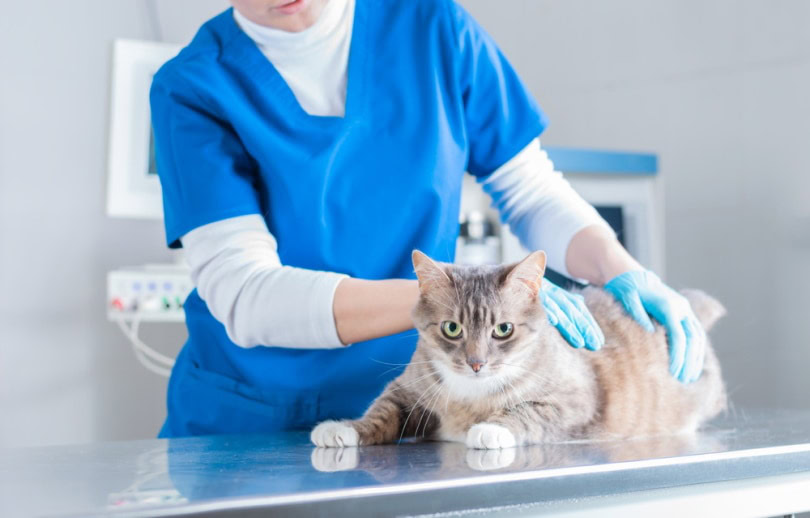
Potential Side Effects of the Rabies Vaccine
Side effects related to vaccines are uncommon, but possible. Rabies vaccine side effects in cats are rare, if present they are typically limited to mild fever, lethargy, lack of appetite, and localized swelling and discomfort at the site of the vaccine.
In very rare cases, a cat may have a severe allergic reaction (anaphylaxis) to a vaccination, but data from 2023 in the U.K. showed that this occurs in fewer than 0.001% of cats.

About Rabies
Rabies is a deadly viral disease that affects the central nervous system. It is zoonotic, meaning it can be transmitted from animals to humans and is transmitted through the saliva of an infected animal. In the United States, more than 90% percent of reported rabies cases occur in wildlife.
The animals that are most likely to transmit the disease include bats, skunks, coyotes, foxes, and raccoons. While cats aren’t natural carriers, they can easily become infected from the bite of an infected animal. The rabies vaccine is crucial to reduce the risk of getting rabies because the disease can easily be prevented, but is virtually 100% fatal when it develops.
The only way to accurately determine whether an animal has been infected by the rabies virus is by performing tests on the brain tissues of the deceased animal.
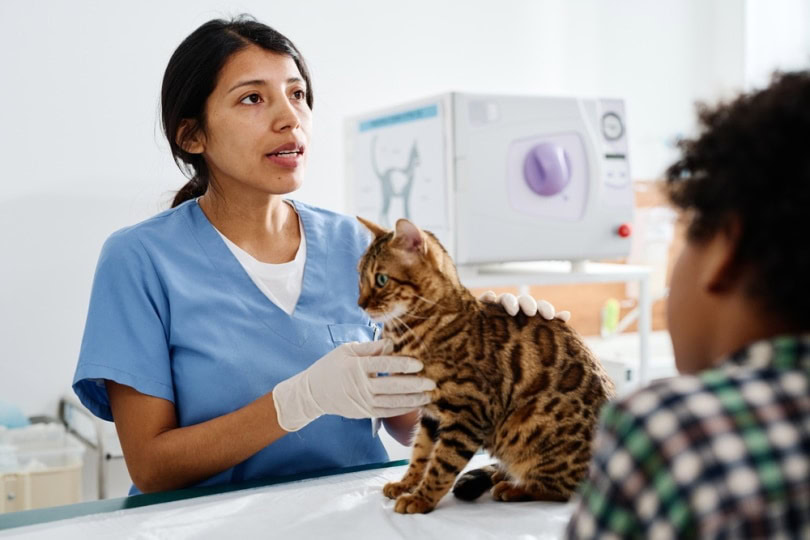
Signs of Rabies
- Sudden and severe change in behavior (a friendly cat becomes aggressive and vice versa)
- Loss of appetite
- Fever
- Nervousness
- Irritability
- Loss of muscle control
- Drooling
- Foaming at the mouth
- Difficulty swallowing
- Difficulty breathing
- Seizures
- Coma
Rabies virus infection in cats will progress through different phases and ultimately result in the death of the animal. Two forms of the disease have been described: the furious and the dumb form, and both share similar prodromal and paralytic stages. It is important to note that each phase might not be clearly differentiated from the others, and, in case of doubt, you should always contact your vet immediately.
Here’s a quick overview of what occurs during each phase of the disease once signs of rabies infection begin.
Prodromal Stage
This stage takes place during the first 1 to 3 days when signs begin to manifest. During the prodromal stage fever, lack of appetite and vomiting and diarrhea may occur. Changes in temperament are also common. Cats that are normally elusive may be unusually friendly and loving, but cats that are typically friendly and social may become withdrawn or aggressive.
During this stage, you may also notice a lot of licking or scratching around the site of the bite that caused the infection. The larynx may also begin to spasm, causing changes in the cat’s voice.
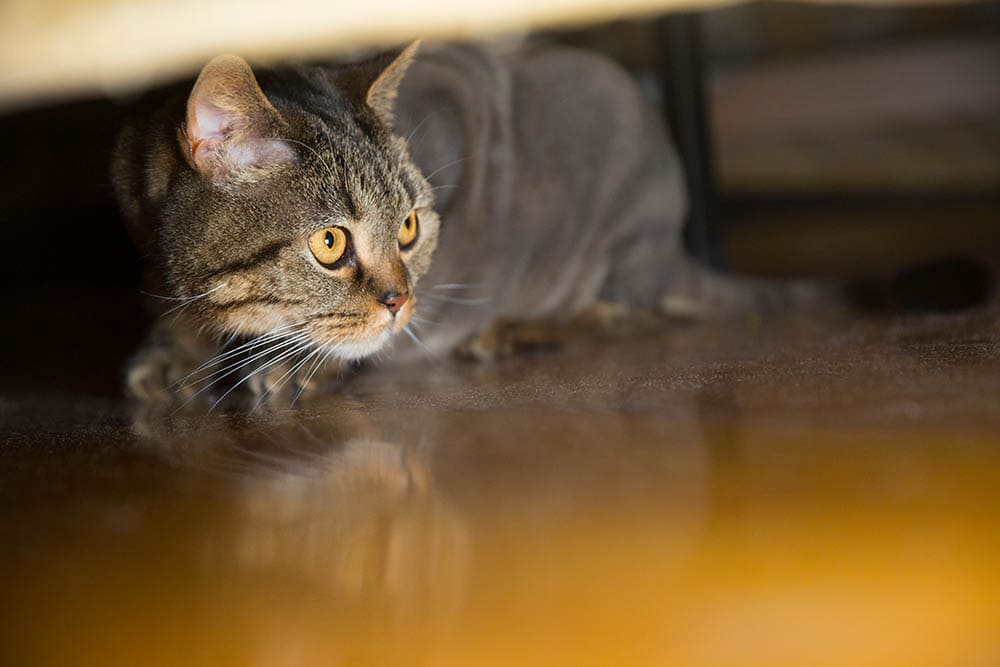
Furious or Excitative Stage
There start to be very noticeable behavioral changes during this stage, which last 1 to 7 days after the prodromal stage in the furious form of the disease. There could be an increase in nervousness and excitability, and the cat may become highly aggressive.
Paralytic Stage
The paralytic stage is the final stage of the disease, which typically lasts 2 to 4 days. At this point the cat will have difficulty swallowing due to paralysis of the larynx causing them to drool and foam at the mouth. Weakness and loss of muscle control will also begin to kick in throughout the body. Once paralysis inhibits the cat’s ability to breathe, death will occur.
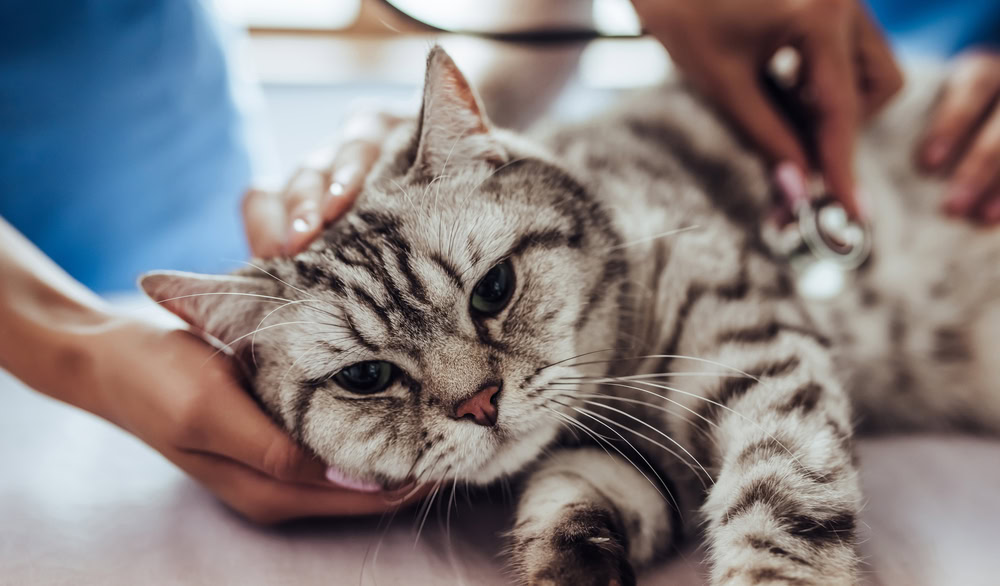
Rabies Prevention
The only way to ensure your cat’s safety against rabies is by having them vaccinated against the disease. Those with indoor cats may feel it is unnecessary to vaccinate a cat that never leaves the home; however, the risk of rabies is still present because potentially infected animals such as bats and other wildlife can still make their way into the home.
It is highly recommended for both pets and humans to avoid contact with wildlife. Rabies in humans is very rare in the U.S., however each year there are more than 60,000 cases of potential exposures requiring post-exposure prophylaxis (PEP). Outdoor cats are considerably more at risk of rabies since they spend time outdoors unsupervised.
It is not recommended to allow cats to roam outdoors for the sake of their safety and that of the environment, and it is essential that all pets remain up to date on all vaccines.

Conclusion
Cats will receive a primary rabies vaccination when kittens and a rabies shot every 1 to 3 years depending on the local regulations and the type of vaccine they’ve received. This is a critical core vaccine that is vital for the prevention of this deadly viral illness that can also affect humans.
- Cat Rabies Vaccine: Schedule, Cost & Side Effects | Westport Vets | Poster Veterinary Associates
- Rabies – Symptoms and causes – Mayo Clinic
- Vaccinations | American Veterinary Medical Association
- Knowing Requirements For Your Pet’s Rabies Vaccination | VMBS News
- Table of State Rabies Laws Concerning Cats | Animal Legal & Historical Center
- ABCD Guideline for Feline Rabies
- Vaccines for Cats | VCA Animal Hospital
Featured Image Credit: Tom Wang, Shutterstock
